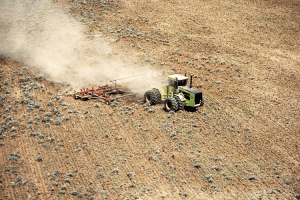We have much more to do and your continued support is needed now more than ever.
Thinking of the Future at America’s Grasslands Conference
Like a herd of cattle heading to a stock tank, leaders in grassland conservation from all over the country are convening today in Manhattan, KS for two days of reflecting and sharing on how America’s remaining grasslands can be conserved and restored.

High crop prices are driving rates of prairie plowing not seen since before the Dust Bowl. In the last few years alone, over a million acres of grass have been plowed up in the northern plains. Geographers are talking about this as one of the most profound land-use changes in recent US history.
Conserving the Prairie

Though sanguine about the prospects for easy or quick fixes, I’m excited for all the energy and ideas that our speakers and participants will bring to the conference. I can’t wait to see our keynote speaker Michael Forsberg’s award-winning conservation photography. I look forward to the discussion of Chris Wright’s research into the high rates of conversion in the prairie pothole region. I know I’ll be proud to hear my boss, Julie Sibbing, describe the coalition’s efforts to include conservation compliance and the sodsaver provision in the farm bill, and the prospects for other grasslands programs.
Recruiting ranchers was a priority at this year’s conference. We know ranchers play a critical role in conserving prairie, and we’re trying to figure out how we can help them ‘keep the right side up,’ as they say. I’ll be a bit nervous, but I’m looking forward to moderating a plenary panel with ranchers, addressing how we in the conservation community can work better with ranchers around our shared goals of conserving grasslands.
Managing Resources—And Expectations
And in the breakout sessions, we have a great lineup of speakers in a wide range of topics. Experts will address beef and bison, and the birds and the bees. They will discuss managing wildlife, making bioenergy development sustainable, and new ways of rewarding more sustainable ranchers, among other topics. A second panel with ranchers will discuss details of conservation programs. There is even a panel on citizen action, including a woman from Iowa who restored her property to its natural condition as an oak savannah.
Today, tour groups are out exploring the Flint Hills—one of America’s largest intact prairies—and tomorrow night, we will have dinner at the Konza Prairie, where we will drink a beer made especially for the conference by Tallgrass Brewing Company.
I know this conference—or any conference, for that matter—won’t solve the crisis of grasslands loss. But what we can hope to accomplish is to pull together the leaders of all the various groups and agencies who will be part of the solution, and develop new and additional strategies that will help solve or slow the crisis. I know that I for one am thirsty for inspiration and ideas on how we can save America’s grasslands.





















